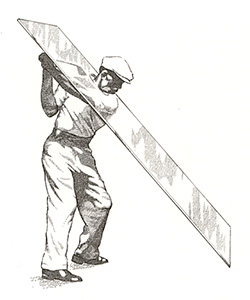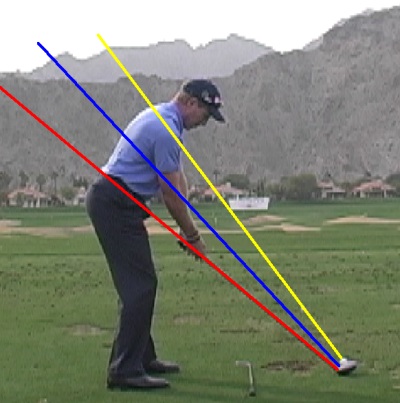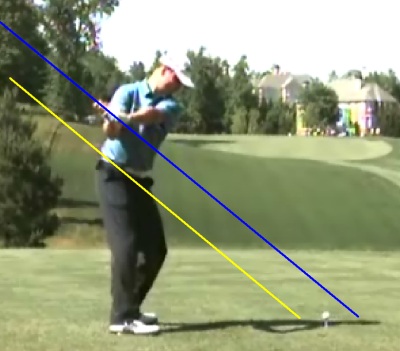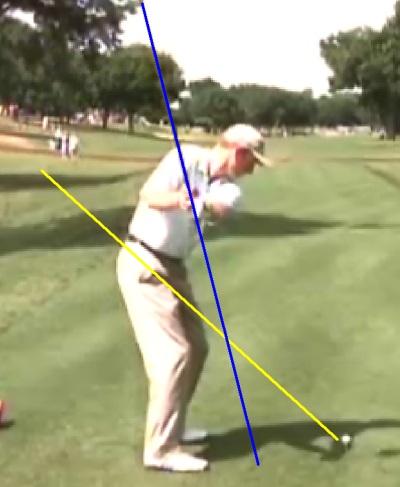However, the steep downswing is really the result of everything that has happened before, and from a transition NOT led with the lower body.
But even if you learned to start your swing with your lower body first, you could very well still be swinging down too steep - causing an out to in swing path which produces pulls, sliced shots and pull slices!
Why would that still be happening?
Because if you've been swinging down too steep for a long time and you've never done anything to change it, then it will be a habit.
Now if you're one of the lucky ones that doesn't suffer from an overly steep downswing, today's drill will still be great for you to do.
This drill will reinforce the correct club movement when you're transitioning the club into the downswing.
What is the correct transitioning of the club into the downswing?
Very simply, when you're changing directions from your backswing to downswing, your club should move to the left.
This is one of the toughest moves in the transition for a golfer to perfect.
Why?
Because it's generally the complete opposite of what a golfer has done their entire golfing life.
But once you learn and perfect this move, it will make a HUGE difference to your golf swing and ball striking.
Because this move is what really separates a great ball striker from an average one, as it's the complete opposite of what an average ball striker generally does.

To get a feeling for what should be happening with the golf club during the transition, I want you to get your driver and swing to the top of your backswing and then stop.
...then start your transition with your lower body and at the same time move your driver to the left.
Now when you do this it will probably feel very, very strange at first, because it's the complete opposite of what you've been doing. And the only way of getting over this is to keep doing this movement over and over again.
But if you're struggling to get the right feel, think of turning your hands like you would when opening a door that has a knob type of handle. At the top of your backswing you should be turning your hands so the club flattens.
If you would like much more instructions on how to do this, along with a video of a drill that will quickly teach you how to have the correct hand action at the top of your backswing and into the downswing, I suggest you go here and get the special on the long game improvement mastery program:
Because in Lesson 22 of that program you're shown in great detail what you can use to perfect this "flattening the shaft" move, so you can swing down on a shallow, inside swing plane.
And when you complete all 34 lessons in the long game, step-by-step program you will build an effortless, silky smooth and powerful golf swing.
And you can start to do this in less than 5 minutes from now!
Plus, this special comes with 5 great golf improvement gifts, valued at
But the special price on the long game improvement program ends very soon so if you're at all frustrated with your ball striking consistency, check this out now for THE complete swing solution....
Here's some amazing feedback from golfers who have used this program and the bonuses in the past:
"After working through this program my ball flight now is straight with a little draw at the end.
This is a B-I-G improvement from my previous slice ball flight. The instructions were very easy to follow and understand. My drives are now a good 20 - 25 yards longer thanks to this program.
I have tried numerous other things but this is the only thing that has worked. I'm lucky to have found it. Thanks!"
Mark Benson, North Carolina, USA
"I went out last weekend and played my first round of golf since getting the program and following it and I really smoked the ball. I am so happy to say I shot an 84. I typically don't break 100!
My golf game has dramatically improved by hitting the ball much farther and with much more accuracy. The information you supplied me has changed my game completely.
I now believe that I have the swing and confidence to play in local tournament here. Thanks so much for the help."
See why people are raving about the program and bonuses here:













